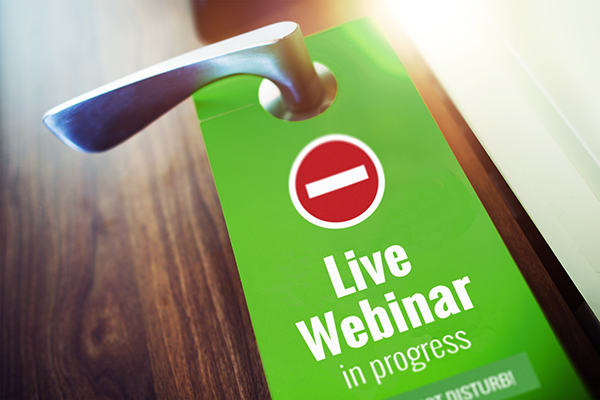The recent live interview on BBC News with Professor Robert Kelly reminds us that when giving a live webinar presentation, unexpected distractions can happen. You better be prepared for the unexpected. Professor Kelly managed to keep his composure and complete the interview when his kids stormed the room, but other situation may require a different approach. Here are some tips on how to deal with problems during your webinar.
Table of Contents
Stay Calm, Don’t Panic
Sometimes what seems to be a major problem during the webinar may just be a minor hiccup. So don’t panic, it will probably just make the problem worse. Sometimes it is best just to take a deep breath and think rationally about the cause of the problem.
It is also important to communicate well with your audience. Let them know you’re having some difficulties. Have a relaxing picture to show while you take some time out to resolve the problem. Once the issue is resolved, make sure that everyone is back before resuming the presentation.
Have a Contingency Plan
Have a secure contingency plan for every eventuality. It will help you know exactly what to do in the event of a problem.
- If your computer crashes or freezes
Make sure that you have two devices logged in and ready to go beforehand, whenever possible, such as the main desktop plus a laptop or mobile device. This way, if one slows down or crashes, you can easily switch to the other one. It is always good practice to reduce the number of background tasks running on your presentation computer to avoid a processor overload. Also, make sure that your portable devices are fully charged before your event starts.
- If the internet goes down
Mobile devices now come with a 3G or 4G connection that does not rely on your home or office WiFi or Ethernet connection, so you can easily use these devices to join your webinar. Alternatively, you can easily turn your mobile device into a hotspot. This could be a temporary measure while you reconnect to your main internet connection. Even if the internet connection problem will be a longer problem than expected, you can at least inform attendees of the problem.
Some webinar platforms allow for a telephone landline to be used. Make sure you check it beforehand so you know exactly how to set it up and use it so you have it as a backup.
- If the audio fails
Audio failure could be a complete loss of audio, or the line breaking up. Make sure you set the audio settings in advance and do a dry run to check if everything is working. If for some reason the audio fails you, use the chat system to apologize for the inconvenience and inform that you are doing everything in your power to rectify the problem. If necessary, contact your provider’s customer support via live chat to get help with solving the problem.
- If a guest speaker doesn’t show
Your guest could have connection problems. Make sure that all guest speakers have a cell phone handy, so you can call them and check what is the problem. Make sure they know how to use the landline option to call in to the webinar to present.
To deal with a complete no show, it is good to have a backup content plan, so make apologies for the speaker and then move on to the backup presentation. If you do not have a backup presentation ready then you will need to inform your attendees that the webinar will be rescheduled. Always send the most heartfelt apologies and some freebies as a matter of goodwill.
Conclusion
The best way to make sure that your webinar contingencies will work when they need to is to foresee and plan for every possible scenario. So go through the “what ifs” to train in coping with unexpected events and problems.
And to make sure nobody storms into your room while your online event is on, lock the doors and use our free do not disturb door hanger 🙂







